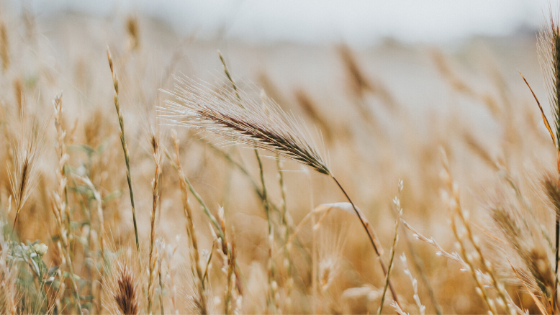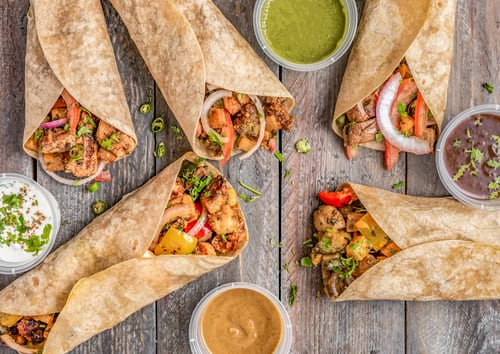Preparing for coeliac testing: ‘Gluten Challenge’ on a low FODMAP diet | FODMAP Friendly
Posted on November 23, 2019
To accurately test for coeliac disease it is important to consume enough gluten prior to testing, as this ensures the test is reliable. If you are eating gluten-free before being tested for coeliac disease, false negative results can occur.
Consuming gluten in the lead up to a blood test or biopsy to test for coeliac disease is referred to as the ‘gluten challenge’. The ‘gluten challenge’ involves consuming approximately 10 grams of gluten per day for 6 weeks prior to the test, as recommended by Coeliac Australia.
In terms of food, 10 grams of gluten is roughly the equivalent of 4 slices of wheat-based bread adults, or 2 slices of wheat-based bread for children.

Understanding the testing process:
Gene testing: Testing for certain HLA genes via a blood test or buccal (cheek) swab can be useful in understanding coeliac disease diagnosis. Over 99% of people with coeliac disease have the HLA genes DQ2 or DQ8 or parts of these genes. Thus, a negative test result can rule out coeliac disease. A positive test result alone cannot be used to diagnose coeliac disease, as not all people with the genes will develop coeliac disease. Therefore a positive result provides information that you have the potential to develop coeliac disease.
The gene test is not dependent on gluten intake, so it can be used for people who have already removed gluten from their diet. However, if the gene test is positive, then a gluten challenge will be commenced to ensure the next stages of testing (blood test for antibodies and small bowel biopsy) are accurate.
Blood test for antibodies: This test measures the levels of antibodies in the blood that are used to screen for coeliac disease. A positive test result should be followed by a small bowel biopsy.
Small bowel biopsy: A gastroscopy procedure is undertaken to collect a tiny sample (biopsy) of the small bowel. The biopsy will be examined under a microscope to detect signs of damage (villous atrophy).
Can I do the ‘gluten challenge’ on a Low FODMAP diet?
Yes, you can! It is important to remember that gluten and FODMAPs are not the same compounds, although they can both be present in the same food products. Gluten is a protein found in wheat, rye and barley, whereas FODMAPs are short-chain carbohydrates found in a range of different foods. These main grains that contain gluten (wheat, rye and barley) are also high in FODMAPs, mainly oligosaccharides (fructans).
However, there are some gluten-containing foods are low FODMAP. By monitoring serving sizes and timing between meals, it can be possible to adhere to the gluten challenge while keeping your diet low FODMAP.

Tips on keeping your overall intake low FODMAP whilst completing the gluten challenge:
1. Become familiar with low FODMAP serving sizes of gluten-containing foods
To consume 10 grams of gluten per day, you may find it easier to eat this total amount over the course of the day, from a range of different food items.
The following Low FODMAP food items contain approximately 2-2.5g of gluten at the serve sizes listed:
| Food Item | Serve Size for 2-2.5g gluten |
| Low FODMAP certified wheat-based bread (eg. Alpine Breads Sour Rye) | 1 slice |
| Low FODMAP certified spelt sourdough bread (eg. Alpine Breads Spelt & Barley, Hemp Rising) | 1 slice |
| Lo-Fo Pantry flour eg. Baked goods made with this flour (see recipe ideas below) | ¼ cup (30g) |
| Spelt wraps | 1 wrap (25 grams) |
| Soba noodles made from wheat (>50%) and buckwheat | 30 grams uncooked |
| Plain Sweet biscuits (made from wheat) | 2 small biscuits |
| Pretzels | ½ cup |
Be sure to check the low FODMAP safe serving size if you are eating more than the above serving sizes in one meal.

2. Be aware of timing of between serves
Some wheat-based foods such as bread and pasta are low FODMAP at smaller serving sizes. To consume several serves per day, it is recommended to wait 3 hours between each serve to allow your overall intake to remain low FODMAP.
Sample day on a plate
Breakfast 7am – 2 slices Alpine bread with low FODMAP toppings such as peanut butter strawberries [4-5g gluten]
Snack 10.30am – 2 small sweet biscuits OR ½ cup pretzels OR homemade muffin or pikelets with Lo-Fo Pantry flour (see recipes below) [2-2.5g gluten]
Lunch 1pm – 1 savoury muffin made with Lo-Fo Pantry flour (see recipe below) [2-2.5g gluten]
Dinner 6pm – wheat soba noodles OR 1 fillet grilled salmon/1 can tuna (low FODMAP ingredients), ¼ cucumber, ½ carrot, 1 cup spinach, 2 tsp soy sauce [2-2.5g gluten] OR
1-2 tortilla wraps made with Lo-Fo Pantry flour with chicken or low FODMAP protein of choice and salad (see recipe below) [2-5g gluten]

3. Seek advice from a dietitian
If you’re unsure whether you’re eating enough gluten for coeliac testing or having trouble understanding the low FODMAP diet, always see a dietitian for guidance. Not eating enough gluten in the lead up to your serology (blood) test and biopsy can result in a false negative result. This means you may be wrongly diagnosed as not having coeliac disease and continue to do damage to the bowel. Dietitians are experts in medical nutrition therapy and can provide individual support to help you understanding coeliac disease and IBS.
Recipe ideas using Lo-Fo Pantry flour:
- Savoury spinach and goats cheese muffins (serve size = 1 muffin)
- Blueberry and coconut muffins (serve size = 1 muffin)
- Pikelets with berries (serve size = 2 pikelets)
- Tortilla wraps (serve size = 1-2 wraps)
References:
Coeliac Australia: https://www.coeliac.org.au/diagnosis/







